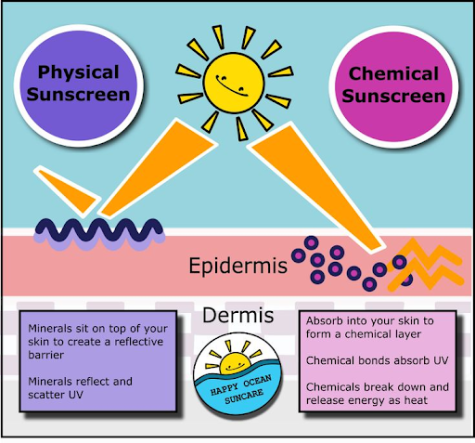How does sunscreen work?

Everyone knows that sunscreen protects your skin. But how does it work?
After such a long winter, I can hardly remember what it feels like to soak in the sun. But spring is fast approaching, and so is my annual beginning-of-spring sunburn. Picture this: the sun is warm, and my sunscreen is buried somewhere among my summer things. How could I be expected to remember it?
When my face is red and sore a few hours later, I always remember how important it is. But how does it manage to protect our skin?
According to an article from MD Anderson Cancer Center, there are two ways that sunscreen works, and they are often used together. One aspect is inorganic physical blockers, such as titanium dioxide and zinc oxide. These blockers sit on the skin, and they reflect UV rays away like a mirror.

There are also organic chemical absorbers, such as avobenzone and oxybenzone, that form a protective layer that absorbs UV rays. The chemical bonds absorb the rays and break them down into heat, which is released. From this description, it’s natural to worry that these chemicals are absorbed into the skin. However, according to an article from Deep Science, the FDA found popular ingredients such as avobenzone to be safe after investigating these concerns.
So when the sun finally reappears, don’t forget to put on sunscreen. Its chemical and physical blockers will keep you safe from UV rays— as long as you use it correctly.
by Hana Shinzawa ’24, Science Editor
24hshinzawa@montroseschool.org









